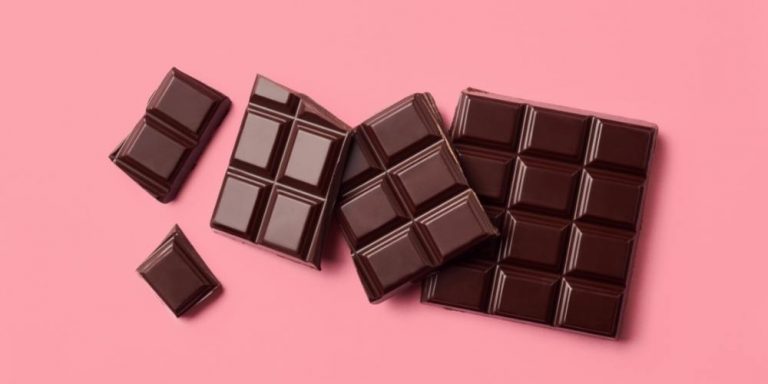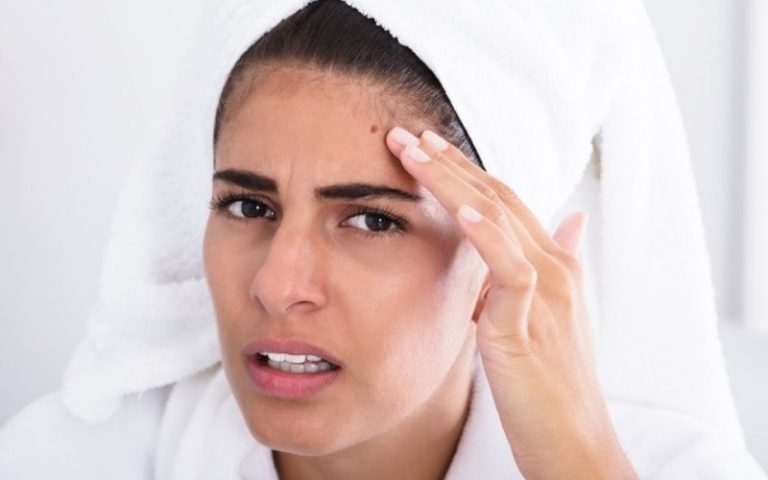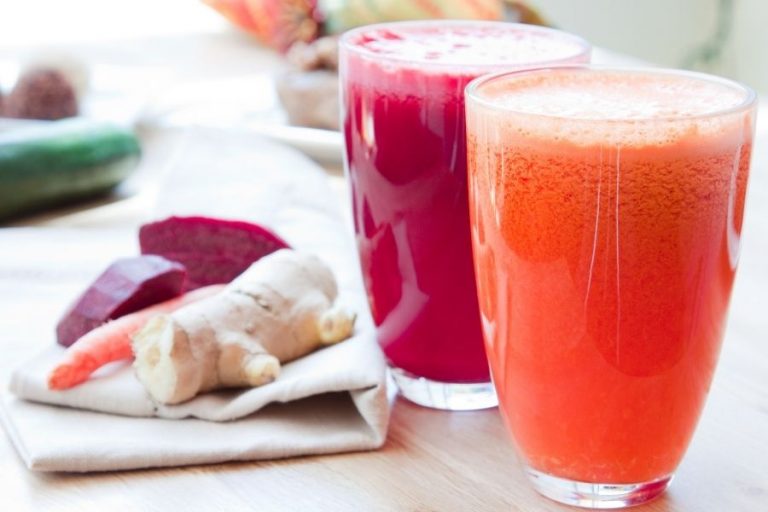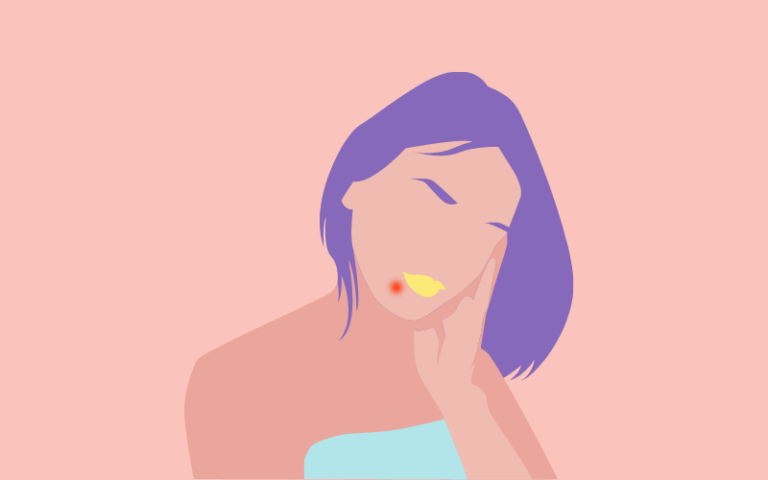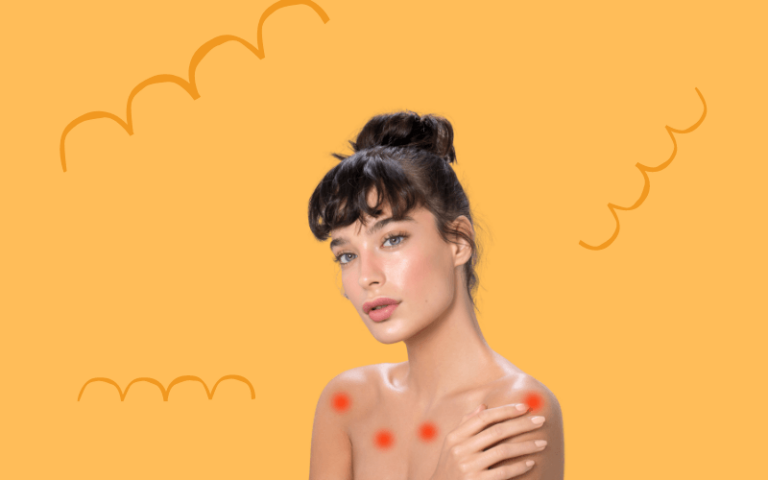How To Get Clear Skin: 20 Expert-Proven Tips

Hey you. We get it. You’re here because you’ve got some skin concerns (hello, acne!) and want to address the sitch.
Well, don’t worry.
Together we’re going dive into skin health and skin care. You’ll get the latest and greatest info and tips, all backed by science and research, aimed at improving your skin’s wellbeing.
How to get clear skin?
There’s bound to be a solution — and probably more than one! — for your troublesome skin issue(s?).
Trying Cerave or Cetaphil is a good start.
Keep reading to learn more and get started on your journey to your best skin ever. In this article, we’ll cover:
- Acne basics
- Prevention tips and remedies you can try
- When to get professional help
How to get clear skin: Understanding acne
Acne 101
A good understanding of acne is key to managing it.
Acne goes by lots of slangy or everyday names (e.g., zits, pimples, spots, blemishes), but most of the time people are referring to the medical condition formally known as acne vulgaris. This skin disease knows no bounds.
In fact, let’s put it into perspective for you:
- Acne is super common. It’s estimated that over 90% of the world’s population has been affected by this condition at some point in their lives.
- People of all ages (not just those going through puberty!), sexes and races (3) wrestle with acne. In the U.S., about 85% of 12-24 years old have at least minor acne. (Adult acne’s very common, too.)
- It’s well-documented that acne can affect quality of life. One study reported that almost 50% (5) of adolescents with acne suffered negative impacts on their self-esteem.
What is acne?
Acne occurs when your pores, hair follicles, or oil glands get plugged up with dirt, excess oil, bacteria, dead skin cells, or other debris.
These clogs can lead to small sores and inflammation — yep, the maddening bumps you’re hoping to banish.
There’s no one, simple answer to what causes acne. Lots of things can instigate or aggravate acne.
Here are some of the usual [potential] suspects:
- Hormones, hormonal changes or hormone imbalances
- Medications
- Genetics (Thanks, mom and dad!)
- Diets high in carbs or fat
- Stress levels
- Environment
- Cosmetic and personal care products
It’s possible, too, that your acne may be rooted in more than one of these underlying causes.
Acne symptoms
This dermatologic disorder presents itself in many different forms.
The color, size, texture, and depth of your blemishes depend on the kind of acne you have. But perhaps some of these ubiquitous symptoms are familiar to you?
Zits can be:
- Accompanied by redness
- Reddish, pinkish or have white or dark spots at the center
- Short-lived
- Filled with pus
- Tender, sore, or downright painful
- A little swollen
Types of acne
Acne’s a blanket term. There are actually several different kinds of acne vulgaris, each with its own unique characteristics.
- Papules are little red bumps that can feel firm or rough.
- Pustules aka pimples, are papules filled with yellow-ish pus.
- Whiteheads aka closed comedones, are blocked-but-shut pores. They’re often small, but numerous.
- Blackheads aka open comedones, are clogged pores that remain partially open (revealing a dark spot in them).
- Nodules are sub-dermal lumps that’re sizeable, firm and frequently painful.
- Cysts are lumps that form below the skin. They’re typically painful and pus-filled.
Fungal acne is often confused with acne vulgaris. But, it’s really a skin infection that occurs along the hairline.
Also, don’t confuse acne with rashes, eczema, psoriasis or other skin issues.
Acne locations
Your face hasn’t cornered the market on acne.
Body acne is totally a thing.
Anywhere you have pores, hair follicles or oil glands, you can sport these skin blemishes. Yay! Not.
You can get breakouts on your:
- Head (scalp acne, hairline, neck)
- Face (forehead, nose, chin, lips)
- Back, belly and bottom
- Limbs (arms and legs)
How to get clear skin: Finding your skin type
Determine your skin type
This is a slight detour on the road to those eagerly anticipated tips to clearer skin.
The marketplace is bursting — like a juicy popped pimple — with skincare products and procedures for acne-prone skin.
So, knowing your skin type will help you find the right treatments for your bod. (Hint: It’ll save you time, $$$, effort, and frustration!)
The four main skin types are:
- Normal skin is balanced; it’s neither too dry or too oily.
- Dry skin lacks moisture and tends towards being tight, scratchy, itchy and flakey.
- Oily skin can be shiny, greasy or tacky due to excess oil production.
- Combination skin has zones of dryness and oiliness.
On top of these classifications, you can have sensitive skin.
Sensitive skin’s delicate and may react more or differently to cleansers, cosmetics, medication, sweat, and so on than normal skin types.
20 Best tips for how to get clear skin
Without further ado, enjoy our round-up of complexion-loving prevention and treatment wisdom….
Wash your face twice daily
One of the easiest ways to work towards clear skin is simply keeping it clean. Regular cleansing helps remove all those impurities that can lead to blemishes.
This can help prevent acne breakouts as well as enable topical treatments to be more effective (20).
It’s recommended that you wash your entire face (9) morning and night.
Obviously, if you get sweaty or dirty or your face gets oily from your hair (headbands, yo) — wash more. Better to have that grit and germs down the drain than setting up camp on your face.
Find the right facial cleanser
Using the right cleanser may be just as vital as actually washing your face. Each skin type and kind of acne has different needs.
It’s a bit like matchmaking — you have to get yourself fixed up with the best facial soap for your condition and complexion.
Experts recommend using a gentle cleanser made specifically for acne-prone skin. Cleansing products with salicylic acid may take down your whiteheads.
For cystic acne, face washes with benzoyl peroxide can be effective. You’ll likely have to try a bunch of different products before hitting on one that works well for you without causing irritation.
Say “no” to hot H2O
Overly heated water is bad news. It can harm your skin by:
- Scalding you
- Increasing skin sensitivity
- Drying out skin by removing natural oils
Gently washing with lukewarm water followed by a splash of cold should yield the best results.
Warm water is sufficient for lifting out pore-clogging grime and rinsing away your soap. A cool-water finish reduces redness or inflammation and prompts your pores to tighten.
This advice holds true for your bath or shower as well.
Try a toner today
Toners are liquid miracle workers… or try to be, at least.
So, spray or cotton-ball swab a thin layer of toner onto your skin after washing.
This is ideal for people who like an extra deep clean, have acne-prone skin, use makeup, or wear sunscreen.
So, what do toners do? These serums can:
- Shrink pores so they look smaller and help keep impurities out
- Act as an occasional stand-in for face washing
- Add moisture to your skin
- Combat ingrown hairs
- pH balance your skin
- Perk you up
Moisturize like you mean it
Clean skin is just the first step to a clear complexion.
Healthy skin also requires protecting and restoring skin cells with proper hydration. This goes for everyone, even those with oily skin or who’re acne-prone.
Regularly indulging the surface of your skin with a non-comedogenic, moisture-rich lotion, gel, or other skincare product (including your cosmetics!) is a good idea.
The right moisturizer can:
- Alleviate dry skin
- Prevent excess oil production from your glands
- Reduce the look of fine lines and wrinkles
- Counteract sun damage
Go for moisturizers that have goodies like vitamin A/retinoids, vitamin C and vitamin E, niacinamide, hyaluronic acid, glycolic acid, lactic acid, probiotics, maybe even sunscreen.
Avoid ones with comedogenic ingredients like coconut oil.
Avoid over-drying your skin for clear skin
When you have acne or oily skin, going heavy on the astringent and pimple creams may seem like a good idea. But, no.
These can parch your skin, which may impair the skin barrier.
Excessively drying skin can cause further irritation (15), more dead skin cells, or your oil glands to kick into high gear. It’s a vicious cycle, yah?
Also, bear in mind that moisturizing slightly damp skin locks in hydration. And you know moisturizers are skin TLC in a bottle.
Exfoliating’s a must for clear skin
Scrub-a-rub-a-do!
Exfoliating sloughs off residual skin cells, cosmetics, excess sebum, and other muck that might clog pores and lead to breakouts.
Plus, it can soften and smooth the surface of your skin and keep your complexion from appearing dull.
Try gentle exfoliation once or twice a week. Use a mild exfoliating cleanser or a soft facial scrubber (e.g., a loofah or brush).
Opt for products and techniques designed for your skin type and condition. See how it goes and adjust your regime as needed.
DON’T TOUCH YOUR FACE
Just. Don’t. Do. It. It’s no bueno for a host of reasons.
Primarily, it boils down to you touching stuff with your hands all day long. They pick up dirt, debris and other pimple-producing toxins.
If you then put your contaminated fingertips on your gorgeous face, there’s about, oh, 100% chance you’ll transfer some of that smut. And this is going to bring on breakouts.
You don’t need a web of red yarn to connect the dots here.
Do NOT pop that pimple
Back off right now. Your skin’ll thank you.
While it’s tempting, even satisfying, to squeeze the life out of your zits (19), it’s a no-no. It can:
- Cause unsightly and sometimes painful scars
- Push pus deeper into the skin
- Worsen the red, irritated skin appearance
- Lead to infections
If you insist on releasing that white goo from its domed skin prison, have a skincare pro do it. They have specific tools and methods to pop pimples more safely.
Nourish your skin from within
It’s true: You are what you eat (and drink). So, learn to love swapping spinach and strawberries for sweets and other junky foods….
High-fat and high-refined-sugar foods, cow’s milk (14), and highly-processed foods are linked to acne.
These foods can increase inflammation (17) or trigger hormonal imbalances, which can turn on the acne works.
On the flip side, good nutrition — from superfood sources like fresh fruits and vegetables, fatty fish, and nuts — could support clear skin goals. Well-balanced and low-glycemic diets may help by:
- Regulating blood sugar
- Minimizing inflammation
- Ensuring you’re getting a variety of vitamins, minerals, antioxidants, and nutrients
- Boosting overall-health
Maintain hydration
Consuming plenty of water floods your skin with positive effects (6).
- It flushes toxins from your body.
- It aids the skin’s barrier functionality.
- Hydrated skin looks brighter, plumper, and more youthful, by making wrinkles and fine lines less visible.
You get a lot of water from the foods you eat, but you’ll need to supplement by drinking water, too.
Experts don’t agree on a specific number of glasses per day, but eight cups is a reasonable guideline to start with.
Get enough sleep for clear skin
Your body restores itself while you’re racking up ZZZs.
Lack of sleep not only leaves you feeling cruddy, it can compromise the composition and integrity of your skin (13).
The skin is your body’s largest organ and protective shield. Sleep fortifies its barrier functions, membranes, and glands.
Your skin’s also tied in to many other systems, such as your immune and digestive system, which require sufficient sleep to be at their best.
Exercise
Moving your body can be a boon for more than your waistline. The next time you’re considering a workout, think about how it improves and increases your circulation.
All that blood flow carries oxygen and nutrients to your skin cells. It also stimulates skin cell regeneration and collagen production — integral to a fresh complexion. Plus, it can lower your stress level (12), which plays a role in acne severity.
Maybe this’ll help you scrape yourself off the couch?
Don’t sweat it
Sweating’s a double-edged sword.
The act of having drops of fluid ooze forth from your pores can be beneficial — it pushes out toxins and debris.
The trick is wash your skin before the perspiration dries. Dried sweat is loaded with all manner of stuff (like those aforementioned impurities) that can clog your pores if you give it half a chance.
Use sun protection (aka sunscreen’s your friend)
No, ya don’t have to cower in the shade for flawless skin. You just need to be smart with your sun exposure.
Overexposure to the sun nukes your poor skin cells with UVA and UVB rays. This can lead to skin problems like premature aging, splotchy complexion and dryness.
One way to minimize the sun damage caused by UV rays? Wear sunscreen.
Choose one that’s lightweight, non-comedogenic, free of parabens, and at least sun protection factor (SPF) 30 (16).
Try spot treatments
Topical spot treatments only go onto your blemishes or over the whole breakout zone (15). (You’re not frosting your entire face with a mask of zit-be-gone ointment.)
Opt for spot treatments with things like benzoyl peroxide, salicylic acid, alpha hydroxy acids, and/or sulfur (18).
These acne-fighting ingredients work in different ways, so select the product that’s meant for your acne and skin type.
OTC spot treatments aren’t your only choice. Home remedies — like aloe vera (24) — may be another great way to spot treat your condition.
Try natural products
Maybe the best way to confront acne is getting back to basics with ingredients from mother earth’s medicine chest.
Natural products (or products with natural components) might be used alone or as part of your prescribed skincare regimen. They come in a variety of forms and preparations.
Here are some natural ingredients to consider:
- Aloe vera
- Pyrus malus (fruit extract from apples)
- Avocado
- Chamomile
- Cucumber
- Natural glycerin
- Grapefruit
- Green tea
- Tamanu oil
- Tea tree oil
- Turmeric
- Witch Hazel
They’re awesome because they have anti-bacterial, anti-fungal, anti-inflammatory, oil-inhibiting, and/or skin-enriching properties.
Use skin-friendly cosmetics
Look for makeup, personal care, and hair products that are non-comedogenic and free of harsh chemicals like fragrances, weird colorants (2), and preservatives (7).
Never use expired or so-old-they’re-practically-antique products. (Yu-huh, ditch that concealer and face mask from five years ago!)
They can host zillions of nasty microbes, just waiting to attack your skin.
In addition to picking skin-friendly cosmetics, be sure to apply them with clean makeup brushes or fingertips. And store your products appropriately (e.g. some may need refrigeration).
Change your linens
Hmmm…maybe sleeping on that dried puddle of drool isn’t the greatest idea…. pillowcases can harbor dirt and bacteria. And, ones made of rougher fabric can irritate the surface of the skin.
Your best bet?
Switching to a fresh, soft pillowcase. Add this to your weekly skincare routine.
While you’re at it, grab a clean towel and washcloth, too. Ya don’t have to wait until they start smelling like the inside of your gym bag.
Clean your phone screen
Ew! This is one of those “duh!” tips that you rarely think about or do. (When’s the last time you cleaned it?)
That phone’s FILTHY, especially if you’re toting it to the bathroom/gym/great outdoors or manhandling it at mealtime.
Now envision all that who-knows-what against your cheek. Use a phone disinfector or electronics-safe antibacterial wipe on the reg.
Book an appointment with your dermatologist
If your acne management efforts aren’t working, or your skin’s causing you emotional distress, your next step might be to seek professional dermatology help.
Your dermatologist, a medical doctor who specializes in skin health, can diagnose your skin condition and recommend a treatment (18) regimen.
Your dermie can also help connect you with a qualified counselor to address the psychological aspects of your care plan or a nutritionist to sort out the dietary side of things.
Medications & more for acne
Treatment depends on the kind of acne you have and its root cause.
Your doc may advise a topical spot treatment or oral antibiotics. Antibiotics, which work by reducing skin bacteria and inflammation (1), are commonly prescribed for moderate to severe acne. Sometimes, alternative meds — like spironolactone — can resolve acne issues.
Aside from pharmaceutics, your dermatologist could recommend:
- Other therapies (like light therapy or chemical peels)
- Avoiding harsh soaps and moisturizer, waxing, and skincare procedures
- Dietary and lifestyle changes
- Medical care for underlying health concerns
Takeaways
The path to clear skin may be bumpy. But it’s there.
Check out the research-back acne prevention and treatment info and tips here. Give them a try — you’re bound to find at least one thing that’ll bring you some relief.
Getting pro help is another great option. A dermatologist, spa- or salon-based skincare expert, and even a counselor or nutritionist may be part of your star-studded anti-acne team.
Remember, though, caring for problem skin is a long-term commitment. So don’t give up! You will find a routine, skincare products, and acne products that suit you.
- 10 Skin Care Habits That Can Worsen Acne. https://www.aad.org/public/diseases/acne/skin-care/habits-stop. Accessed 13 Jan. 2021.
- Acne – Self-Care: MedlinePlus Medical Encyclopedia. https://medlineplus.gov/ency/patientinstructions/000750.htm. Accessed 13 Jan. 2021.
- Bhate, K., and H. C. Williams. “Epidemiology of Acne Vulgaris.” British Journal of Dermatology, vol. 168, no. 3, 2013, pp. 474–85. Wiley Online Library, doi:https://doi.org/10.1111/bjd.12149.
- Can the Right Diet Get Rid of Acne?https://www.aad.org/public/diseases/acne/causes/diet. Accessed 13 Jan. 2021.
- Chon, Susan Y., et al. “Antibiotic Overuse and Resistance in Dermatology: Antibiotic Overuse and Resistance in Dermatology.” Dermatologic Therapy, vol. 25, no. 1, Jan. 2012, pp. 55–69. DOI.org (Crossref), doi:10.1111/j.1529-8019.2012.01520.x.
- Chularojanamontri, Leena, et al. “Moisturizers for Acne.” The Journal of Clinical and Aesthetic Dermatology, vol. 7, no. 5, May 2014, pp. 36–44.
- Decker, Ashley, and Emmy M. Graber. “Over-the-Counter Acne Treatments.” The Journal of Clinical and Aesthetic Dermatology, vol. 5, no. 5, May 2012, pp. 32–40.
- Does Diet Really Matter When It Comes to Adult Acne? – Harvard Health Blog – Harvard Health Publishing. https://www.health.harvard.edu/blog/does-diet-really-matter-when-it-comes-to-adult-acne-2020081920726. Accessed 13 Jan. 2021.
- Draelos, Zoe Diana, et al. “The Effect of 2% Niacinamide on Facial Sebum Production.” Journal of Cosmetic and Laser Therapy: Official Publication of the European Society for Laser Dermatology, vol. 8, no. 2, June 2006, pp. 96–101. PubMed, doi:10.1080/14764170600717704.
- Fulton, James E., et al. “Comedogenicity of Current Therapeutic Products, Cosmetics, and Ingredients in the Rabbit Ear.” Journal of the American Academy of Dermatology, vol. 10, no. 1, Elsevier, Jan. 1984, pp. 96–105. www.jaad.org, doi:10.1016/S0190-9622(84)80050-X.
- Garner, Sarah E., et al. “Minocycline for Acne Vulgaris: Efficacy and Safety.” Cochrane Database of Systematic Reviews, edited by Cochrane Skin Group, Aug. 2012. DOI.org (Crossref), doi:10.1002/14651858.CD002086.pub2.
- Global Acne Market Report for 2016-2026. https://www.prnewswire.com/news-releases/global-acne-market-report-for-2016-2026-300576931.html. Accessed 13 Jan. 2021.
- Halla, Noureddine, et al. “Cosmetics Preservation: A Review on Present Strategies.” Molecules, vol. 23, no. 7, 7, Multidisciplinary Digital Publishing Institute, July 2018, p. 1571. www.mdpi.com, doi:10.3390/molecules23071571.
- Holzmann, R., and K. Shakery. “Postadolescent Acne in Females.” Skin Pharmacology and Physiology, vol. 27, no. Suppl. 1, Karger Publishers, 2014, pp. 3–8. www.karger.com, doi:10.1159/000354887.
- Information, National Center for Biotechnology, et al. “Skin Care for Acne-Prone Skin.” InformedHealth.Org [Internet], Institute for Quality and Efficiency in Health Care (IQWiG), 2019. www.ncbi.nlm.nih.gov, https://www.ncbi.nlm.nih.gov/books/NBK279208/.
- Kahan, V., et al. “Can Poor Sleep Affect Skin Integrity?” Medical Hypotheses, vol. 75, no. 6, Dec. 2010, pp. 535–37. PubMed, doi:10.1016/j.mehy.2010.07.018.
- Kober, Mary-Margaret, and Whitney P. Bowe. “The Effect of Probiotics on Immune Regulation, Acne, and Photoaging.” International Journal of Women’s Dermatology, vol. 1, no. 2, Apr. 2015, pp. 85–89. PubMed Central, doi:10.1016/j.ijwd.2015.02.001.
- Léguillier, Teddy, et al. “The Wound Healing and Antibacterial Activity of Five Ethnomedical Calophyllum Inophyllum Oils: An Alternative Therapeutic Strategy to Treat Infected Wounds.” PLOS ONE, vol. 10, no. 9, Public Library of Science, Sept. 2015, p. e0138602. PLoS Journals, doi:10.1371/journal.pone.0138602.
- Leyden, James, et al. “Why Topical Retinoids Are Mainstay of Therapy for Acne.” Dermatology and Therapy, vol. 7, no. 3, June 2017, pp. 293–304. PubMed Central, doi:10.1007/s13555-017-0185-2.
- Nasri, Hamid, et al. “Medicinal Plants for the Treatment of Acne Vulgaris: A Review of Recent Evidences.” Jundishapur Journal of Microbiology, no. 11, 1 Nov. 2015, https://sites.kowsarpub.com/jjm/articles/56552.html#abstract.
- Palma, Lídia, et al. “Dietary Water Affects Human Skin Hydration and Biomechanics.” Clinical, Cosmetic and Investigational Dermatology, vol. 8, Dove Press, 3 Aug. 2015, pp. 413–21, doi:10.2147/CCID.S86822.
- Sunscreen FAQs. https://www.aad.org/public/everyday-care/sun-protection/sunscreen-patients/sunscreen-faqs. Accessed 13 Jan. 2021.
- Tasoula, Eleni, et al. “The Impact of Acne Vulgaris on Quality of Life and Psychic Health in Young Adolescents in Greece: Results of a Population Survey.” Anais Brasileiros de Dermatologia, vol. 87, no. 6, Sociedade Brasileira de Dermatologia, Dec. 2012, pp. 862–69. SciELO, doi:10.1590/S0365-05962012000600007.
- Yosipovitch, Gil, et al. “Study of Psychological Stress, Sebum Production and Acne Vulgaris in Adolescents.” Acta Dermato-Venereologica, vol. 87, no. 2, 2007, pp. 135–39. PubMed, doi:10.2340/00015555-0231.
- Zaenglein, Andrea L., et al. “Guidelines of Care for the Management of Acne Vulgaris.” Journal of the American Academy of Dermatology, vol. 74, no. 5, May 2016, pp. 945-973.e33. DOI.org (Crossref), doi:10.1016/j.jaad.2015.12.037.
